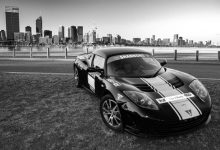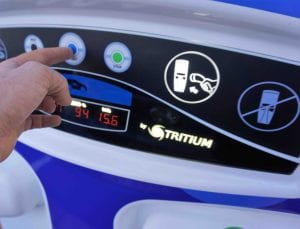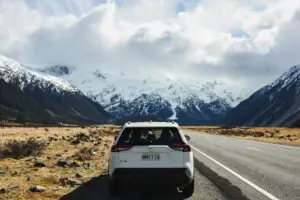As engines fire up today at the Make Smoking History Targa West tarmac rally in Perth, one vehicle among the throbbing engines won’t make a sound.
It’s a 2011 Tesla Roadster, making the case for electric vehicles at one of the country’s most arduous closed road races in the Challenge section, lining up against a five high-performance ICE vehicles in the rally, which runs from today until Sunday, August 12.
The Tesla, driven by seasoned motorsports drivers Jurgen and Helen Lunsmann, will face off against a Mazda RX7, BMW 335i, Porsche 911, Lotus Elise and Holden VF SSV.
Over 4 days, the Tesla Roadster will tackle 900 kms of real world roads and curves around the Perth, driving under the flag of charging infrastructure system providers Gemtek.
It’s their third year running in the rally, says Gemtek’s Florian Popp, having previously been represented by Joseph Law in 2016 and Jurgen in 2017, both driving a BMW i3.
It’s the first time they’ve fronted up to Targa West in a Tesla.
With around 25,000 spectators attending the event, Popp says one challenge is being heard above the crowd — and the roar of petrol engines.
But he is optimistic about the presence of the Tesla Roadster at the race.
“We find the rivalry now is breathing new life into motorsport, because the two are so opposed…electric vehicles stand to revolutionise motorsports just because of the performance.”
To deal with the issues of range in the race—Popp explains that while the 2011 Tesla Roadster has a maximum range of 360km, the racing conditions means it can drop to about a third of that—Gemtek have developed a mobile charging infrastructure, which will be delivered where needed via a support car.
While the Tesla’s position against contenders like Porsche and Lotus is by no means certain, real outcomes for the race, says Popp, will be the data they will acquire from the Tesla after the race.
“The Tesla roadster is quite unique in that it was built on the Lotus chassis, so it is suitable for this type of event, but having said that the 2011 is a very early model electric car,” he explains.
“There’s very little information available from Tesla including lack of workshop manuals. While it has all the pedigree of a Lotus, it’s really a bit of an experimental product by Tesla, so it’s a big unknown.”
As well as collecting data post-race, Popp says that they are “working very closely with the Motor Trades Association of WA, firstly to expose their apprentices to electric cars, as well as with Edith Cowan University to then use the data we gain from this year to make further modifications for the 2019 campaign.”
His hopes for the race? It will all depend on keeping up with charging the Roadster.
“Saturday is the hardest day…we’ve got 440km of total distance. I hope we finish, I hope we don’t run out of battery,” he says with a laugh.










